Roofs are a contradiction. They’re critical in terms of the protection they offer to your building, but they’re also fragile. A minimal of foot traffic will wear away roofing and crush insulation. A small penetration will allow moisture infiltration, leading to mold and decay. Even a small amount of damage can lead to expensive repairs over time.
Ideally, no one would ever set foot on a building’s roof – but industrial building owners don’t really have a choice. A flat industrial roof makes an ideal platform for machinery and capital equipment which would otherwise take up space in a warehouse, office, or factory floor. This equipment needs regular maintenance. For that reason, it’s hard to avoid sending workers up to the rooftop.
Lastly, roofs aren’t just fragile – they’re dangerous. Roofing accidents account for one-third of construction fall fatalities. A roof is full of hazards – ductwork, electrical cables, skylights, and more. All someone needs to do is trip.
What do companies need? They need a stable, well-engineered system that lets their employees and maintenance workers access the roof to complete repairs while mitigating the risk of injury. In addition, this system should be able to rest on top of the roof without damaging it or penetrating the moisture barrier. In other words, companies need roof walkway systems. Here are the reasons why.
Refer to the accident statistics above. One-third of all construction fatalities due to falls occur when falling off a roof. Most businesses are probably dealing with a fully constructed roof that they need to maintain, not a roof that’s partially under construction, but the risk of accident is still high. In addition to simply falling off a roof, workers can:
Exposure to these kinds of accidents present businesses with significant liability. Imagine that a worker trips over a duct on top of a commercial roof and injures himself. Although the building owner almost certainly has commercial general liability insurance that will cover medical care for the injured party, a claim against the building owner will cause premiums to go up. If the injured party decides to sue the building owner, their professional liability insurance will pick up the tab – at the cost of another premium increase. As a benchmark, the average cost for a lawsuit related to an injury on one one’s premises is $54,000.
To decrease costs of insurance premiums, defray lawsuits, and protect the life and health of employees and contractors, it is essential to mitigate the dangers presented by a commercial roof by using a walkway system with railings to prevent falls, and unnecessary accidents.
The roof of a commercial building is, in effect, a waterproofing membrane over an insulation layer. It is designed to do two things: keep moisture out of the building below, and to keep hot or cold air in. It is not designed to be walked on.
If the roof of a commercial building is a conventional flat roof, walking on it will damage the outermost waterproofing layer, which is typically composed of a single-ply layer of plastic or rubber. In the worst-case scenario, the traffic will cause the seams between waterproofing panels to come apart.
Additionally, while the cover-board underneath the waterproofing is usually made of a higher density material, the insulation underneath it may be composed of a material such as expanded polystyrene. Repeated foot traffic on top of a roof will crush and compress this insulation, rendering it useless.
Many organizations will train their employees in how to safely access a roof. Others will keep logs of which employees are out on the roof at a given time. These strategies aren’t effective over the long term, however. The first method only defrays the eventual damage to a roof from walking on it. The second only allows organizations to attribute blame for damaging a roof. The only way to prevent damage to a roof is to prevent employees from walking on it directly.In spite of the fact that they aren’t safe to walk on, companies must frequently send their employees and contractors on top of their roofs. Roofs depreciate over their lifetime and require year-round maintenance to maintain their value. For a commercial flat roof, services might include:
A relatively small up-front investment will dramatically extend the lifetime of a commercial roof and mitigate small problems before they spread. To achieve this benefit, however, companies must continually send contractors up onto their roofs, despite the risk.
In addition to the roof structure itself, there’s a great deal of commercial building infrastructure that’s simply placed on top of the building itself, including:
HVAC vents and equipment are usually laid on top of commercial buildings for ease of access. Although it’s relatively easy for maintenance contractors to reach these systems, they represent trip hazards for anyone else. HVAC Equipment may include:
To access these systems safely, workers need direct access to roof walkways, ramps, stairs, and crossovers that direct traffic safely over and around all the rooftop hazards caused by multiple types of equipment, piping and ducting.
As with HVAC systems, it’s common to place electrical equipment on top of roofs. Unlike HVAC systems, tripping over a roof hazard formed by electrical equipment can produce much more serious injuries. Tripping over the wrong cable – especially during maintenance – may cause electrocution. Even in the best-case scenario, misdirected foot traffic may damage your electrical equipment, which can include:
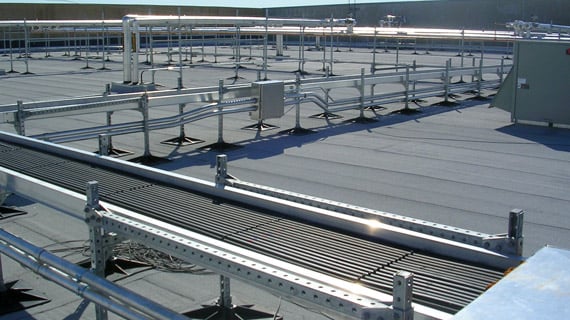
Most rooftop plumbing equipment is used to drain rainwater and condensation – an extremely important function for a flat-roofed building. Damage to these systems will inevitably result in water accumulation and moisture infiltration that will cause significant problems to your roof if left unchecked. Rooftop plumbing equipment might include:
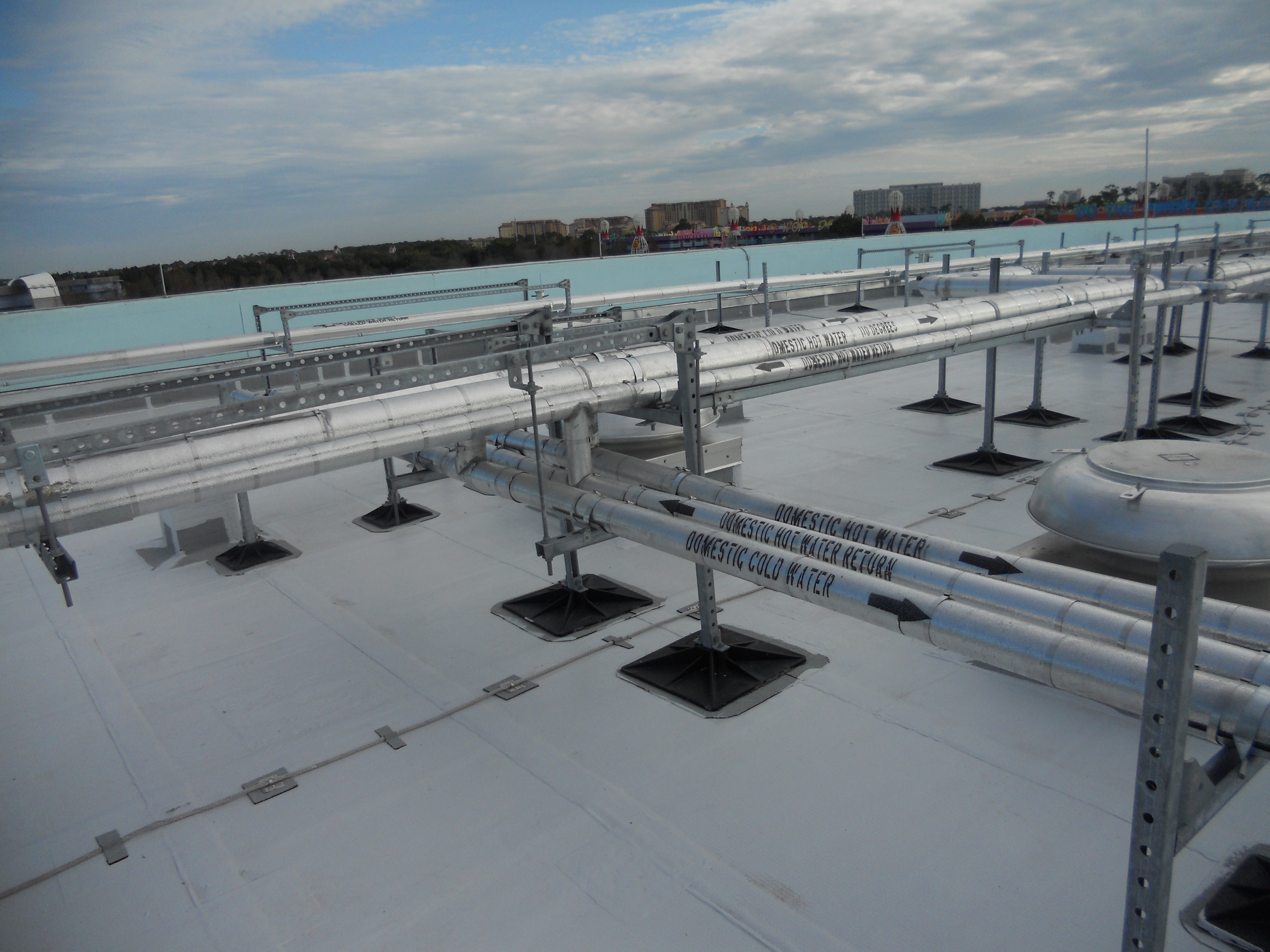
For industrial chemical plants, refineries, and other manufacturing concerns, the roof may be the only place to put certain equipment. Conveyors that carry hot or poisonous gasses must be able to vent directly into the atmosphere, as opposed to an enclosed building. As such, rooftop walkways need to be designed to direct foot traffic around the following structures:
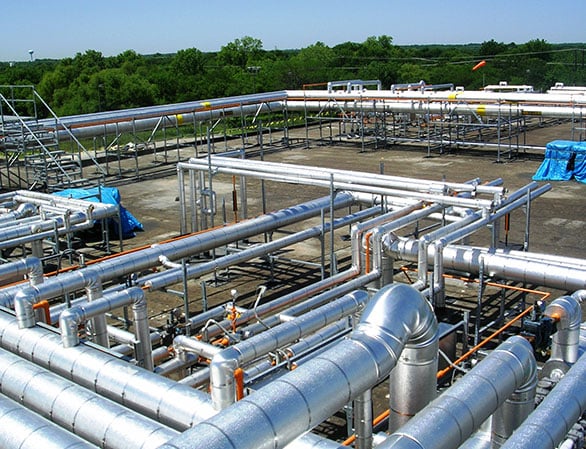
Commercial and industrial buildings often use polycarbonate skylights to augment their electrical lighting systems, thereby saving on energy costs. Polycarbonate however, is extremely susceptible to the outdoor elements, causing degradation of the polycarbonate panel and the seal around it. It can be extremely dangerous, even fatal for anyone who steps or falls on it by accident.
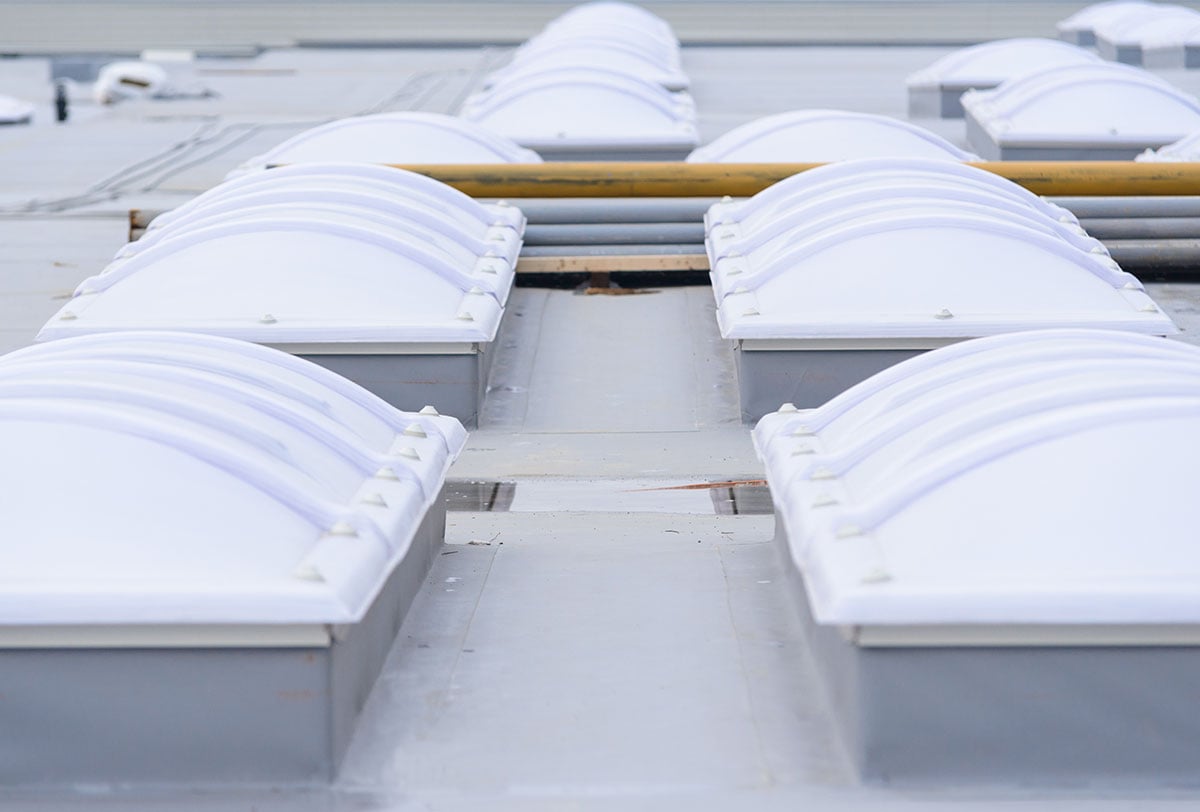
Solar adoption has been booming in the United States, and flat-roofed buildings make the perfect venue for a solar installation. These panels need regular cleaning and maintenance and may represent a hazard for employees who are not trained to approach them safely.
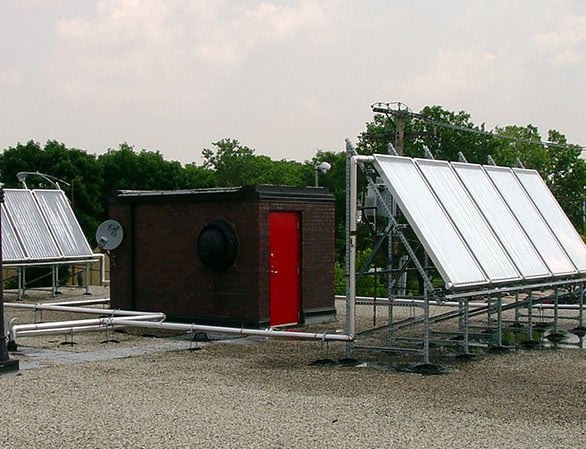
Throughout this article, the idea of roof walkways has been tendered as a way to avoid damage to roofs and injury to workers, while still allowing workers to access the roof and maintain the surfaces and systems thereon. Here’s how they work:
These walkways are designed to be elevated one to two feet off the top of the building’s
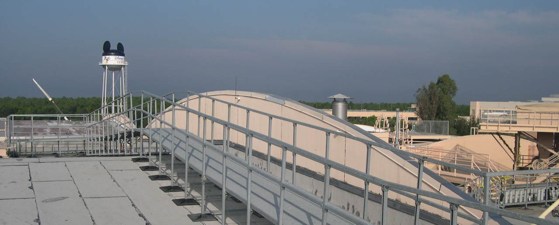
Rooftop stairs are designed to allow safe access to different levels of a roof or rooftop equipment.
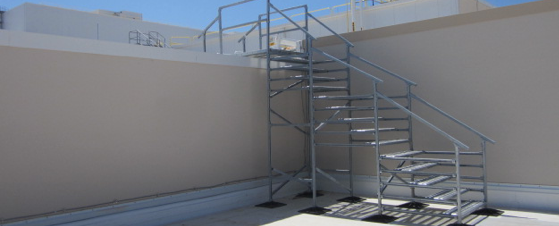
Crossover systems are sets of stairs that allow workers on the rooftop to safely pass over changes in a roofs elevation, or over obstructions such as piping, ducting, and other equipment. These crossovers can either tie into a walkway or stand alone.
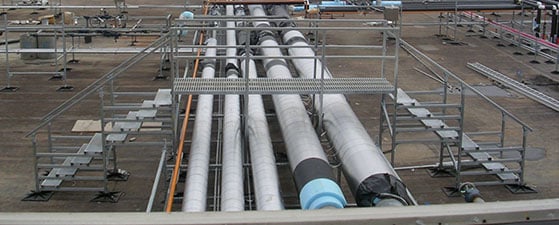
Similar to a crossover, ramps allow workers to pass over more low-lying obstacles, such as vents or cable runs, without the risk of tripping or falling.
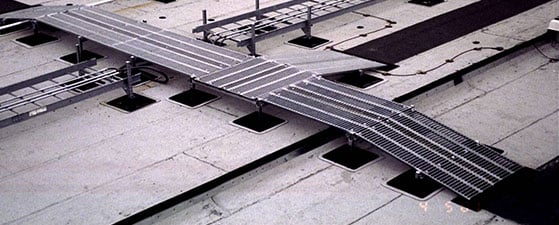
A properly designed roof access system will account for the layout of the roof and location of equipment to be accessed, as well as provide a safe means of egress for maintenance and service personnel. The system may be engineered for high wind or seismic activity by a professional engineer licensed in the state. The engineer will consider the specific criterion of the building, such as its use, location, height, and more, which could result in a call for anchor tie-downs at specific locations to satisfy any wind or seismic loads on the system.
Roofs are dangerous places, but maintenance is a necessity. With a well-designed roof access walkway, furnished with ramps, stairs, and crossovers, as needed, the maintenance workers will never have to set foot on the roof itself. With this addition, not only will the roof be safe for people to walk on, it will be safe from the people walking on it.

PHP Systems/Design
5534 Harvey Wilson Dr.
Houston, TX 77020
Copyright PHP Systems/Design. All rights reserved.